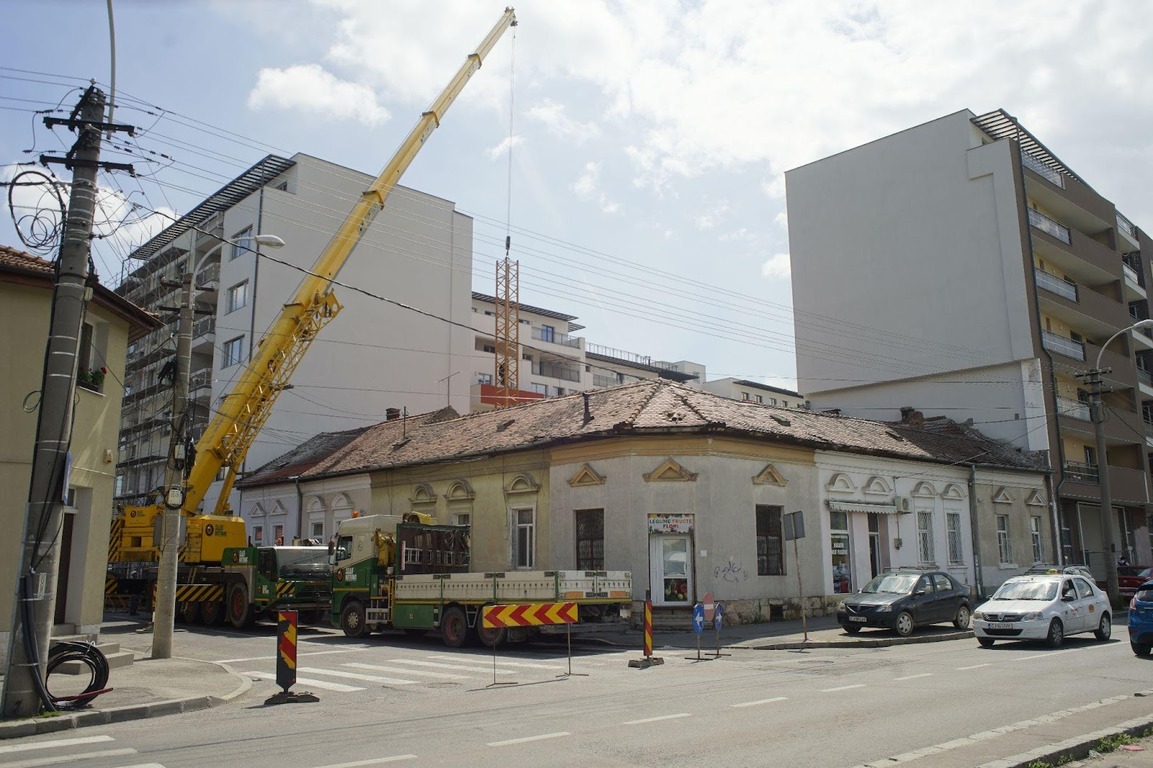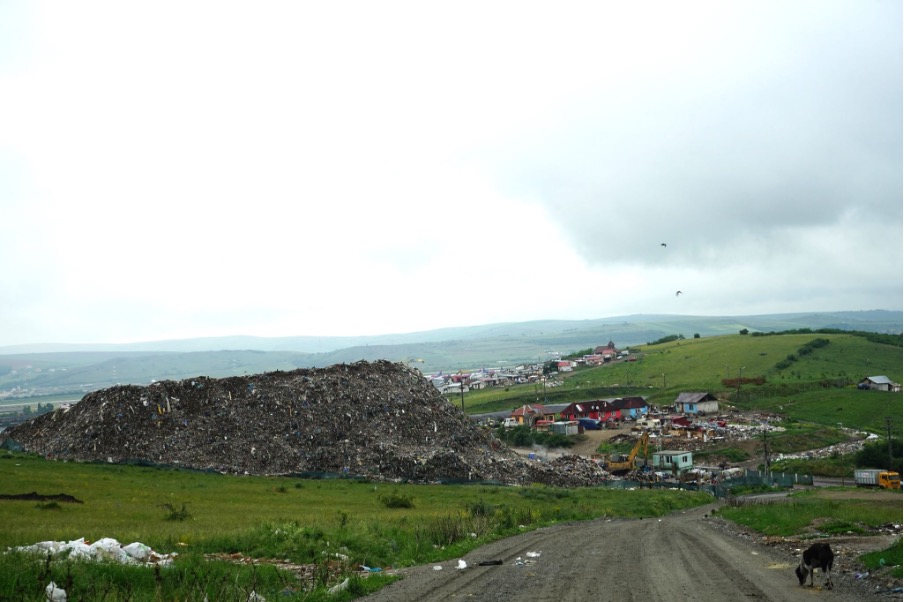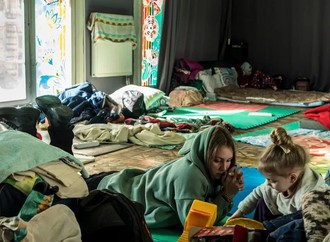The pursuit of international recognition of its urban policies turned into a major source of legitimacy for the Romanian municipality of Cluj-Napoca. The city has been designated the 2015 European Capital of Youth. Next year it made it into the national final stage of the competition for the 2021 European Capital of Culture; losing the title constituted a major drawback. In 2020, the mayor announced that „Cluj is once again on top!” when the city had been selected among the six most innovative in the European Union. It comes naturally for a city praised as the Silicon Valley of Eastern Europe. Nationally, the city already won the urban competition, when a 2017 World Bank report on „magnet-cities” deemed Cluj the most sought after urban location for potential intra-migrants. As the plethora of titles convey, Cluj is now playing in a different league. These resounding branding victories contributed to skyrocketing real estate prices. For several years now, its built square meter value surpassed that of the country’s capital, Bucharest. An argument could be made that this is precisely the intent.
The unrelenting Westernization process found at the core of Romanian urban policies is based not on a quest of catching up with social policies of, let's say, French or German cities. But it is an attempt to produce a competitive national urban field focused on celebrating municipalities which master the attraction of foreign private investment by stripping away their social protection measures. The appeal to an imagined Western society initially incurred a denunciation of former socialist policies, and, subsequently, of most social policies. Rankings render Cluj a heterotopia, our own Western world in a sea of post-communist decay. In practice, however, making Europe at home translates into a project of extensive commodification of urban space and urban life. Housing is of particular interest, in perfect line with recent global developments, increasingly so after the financial crisis. Thus, conflating the blooming and highly profitable real estate industry with a widely supported generic European civilizational paradigm helps to deflect social grievances related to housing. The more housing prices increase in Cluj, the fancier the European urban titles become. One can ask themselves: Why does the trade-off make sense? This piece attempts to answer by pointing to a deeply rooted belief that becoming European requires sacrifices, a belief groomed both by internal and external actors.

Semi-central new real-estate projects next to the basement where a family lived for 20 years until their eviction in 2018 / Photo: George Iulian Zamfir
Smart city as antisocial city
The municipality is constantly on the lookout for new concepts to drive its development agenda. Smart city gradually made its way into political speeches and strategic documents, as well as implemented measures. For example, the first smart street in Romania was pompously inaugurated in Cluj in 2020 and entailed sensor based irrigation systems for green spaces, charging stations for electric vehicles, free Wifi and USB plugs. My intention is not to preach against technological progress, but to highlight the political cost against social spending, such as social housing. So being smart implies an immersion in technopolis and setting aside principles of social justice, because technological progress is considered a form of justice in itself. To provide an answer to Vitalie Sprânceană's observation that, paradoxically, there is no commonly agreed definition of what the smart city actually is: it appears that its ethereal character is precisely what lures public administrators to it.
In this vein, there is an uncanny resemblence between the `good governance` predicament aimed at bad governments in the 1990s, and the more recent one, `smart cities`, pointed towards, well, stupid cities. The incessant need to convey social organization and worth according to ability or moral tenets such as `smart` city or `good` governance, suggests that political debates are over. In fact, employing moral assessments as answers to blatant inequalities rings the same old distinctive disregard to leftist solutions.
As is the case in an urban competitive field based on imported Western concepts, there is a contradiction embedded in the smart city concept: the more cities integrate it in their strategies, the faster this urban governance vision loses ground. In the end, the smart city is more of a marketing strategy: it needs the less smarter cities to exist. Its urban branding character signaling competitive advantages dilutes, because „smart(er) city” is an unconvincing message both to investors and to incoming highly educated and demanding citizens. Marketing practice dictates that contrasts need to be higher, as a means of distinguishing your own brand from your competitors. Thus recently, the municipal discourse seems to have moved on from the smart city to the next trend: ‘innovation’ and `quality of life`.
We may ask ourselves, given this pressure for Westernization, why then, when compared to Western cities, no redistribution policies, e.g. significant social housing funding, make it into the current urban vision? The usual answer was that, because of communist legacies, only some parts of the Western project can be translated, primarily the production of capital and the intensification of labor exploitation. Issues of redistribution were postponed until they were eventually recast as a matter of merit. Yet, in Cluj, meritocracy is another saying for: are you willing and capable to shoulder the creation of a tehno-capitalist utopia? If yes, then welcome aboard.
Banishing the Roma as prerequisite for Westernization
The invitation to join the urban utopia is not addressed to the city’s Roma population. On the contrary, dislocating Roma appears to be precisely the sign of a European project. In this sense, Cluj closely resembles Western cities, though it is unclear if it is a policy translated from West to East or vice versa. Regardless, it builds on institutional racism manifesting since the slavery of the Roma in Romania (in the principalities of Wallachia and Moldavia) between the 14th-19th century. Banishing Roma from cities stands as a key feature of post-89 Romanian policies, one that partially overlaps with anti-communist practices, as numerous Roma had been allocated state housing in nationalized buildings which were, and still are, restituted. Their eviction represented a required societal sacrifice needed to ensure rapid transition to Western capitalism. By occupying formerly nationalized housing, Roma represented an imagined barrier to the launching of the housing market itself.
In the last 32 years, othering the Roma in order to justify dispossession became a national sport played out through urban policies, as well as expected from, and promoted by, a significant part of NGOs. Such othering consists of their plight being rendered a natural disaster which requires charity work. Hence the propensity of public administrators to welcome and even fund some NGOs to temporarily mend the issues, instead of integrating their needs in regular public budgetary cycles. Several Cluj-based charities which benefit from municipal funding to carry out social inclusion projects are episodically transformed by the social assistance department into outlets for new evictees.

Pata Rât area with some of the informal housing built by evicted people and the modular houses provided by the municipality / Photo: George Iulian Zamfir
The city's application to the 2021 European Capital of Culture (ECoC) presented in 2016 is instructive in this regard. The proposed narrative was one of a city comprising a federation of communities that now attempts to forge a union of communities under the ECoC umbrella. The evicted Roma living in Pata Rât, next to the city landfill in what is the largest waste-related ghetto in Europe with a population of over 1500 people, received special attention in the application. Yet, the offer was one of alleged cultural justice as response to social injustice. Basically, Roma from Pata Rât were invited to gather, assess and promote their culture in designated central spaces in the city, as well as debate „institutional relations” in a three-day event and organize an annual march against structural racism. All welcomed efforts on their own, but there was no indication of how the present dire situation was brought to be, as if everyone awakened from a bad dream and suddenly discovered violence without perpetrators.
Fortunately, the history of these communities is well documented. It is, in fact, one of the key activities of housing rights activists in Cluj. The mass eviction of 76 Roma families in 2010 was followed by public outcry and later on by activist organizing. Our foci at Căși Sociale ACUM / Social Housing NOW, a group composed of Roma, ethnic Hungarians, and Romanians, have been tracing past evictions, opposing new evictions, and documenting housing and overall urban development policies, as well as proposing measures to increase access to housing and expand the municipal housing fund.
With regards to social housing policies, we noticed similar European trends. Around the time of the 2008 financial crisis, criteria for access had been gradually made stricter and automatic annual renewal of applications was terminated. Preparing the required papers meant following a complex 13 page rulebook, up from just a couple of pages. The number of applications soon plummeted. Thus, with no bureaucratic documentation of demand, a reduction of public housing supply became not just warranted, but mandatory for an administration engaging in public finance due diligence. Between 2015 and 2020, during the city’s most successful economic period since the socialist industrialization, no new public housing units had been developed. Just one building with 12 apartments had been finalized in 2021 after numerous postponements.
Evictions — a key ingredient of real estate policies
It gradually became clear that mass evictions constituted a required foundation for real estate redevelopment. The post-crisis real estate frenzy hastily swallowed bits of city land and buildings made available through evictions. The policy has been crystal clear, regardless of the two major mayorships dominating the last 30 years, of Gheorghe Funar and Emil Boc. While their tenures are described as radically different, there is common ground in their eviction policies. In the first years of the 1990s, around 800 evictions from state owned housing had been planned by local authorities, with roughly half of them carried out, according to official reports I recently discovered.
Later instances of forced evictions covered by the media or activists, signal that Roma have been singled out as targets. After the mass eviction of 76 Roma families, approximately 350 people, from Coastei street in 2010 and the ensuing protests, the municipality took a step back and targeted single housing units, particularly from the old housing stock. As the new Civil Procedure Code was passed in 2013 and legally eased evictions, the municipality switched to a more rigorous juridical instrumentalization of the practice. With it, political justification for why evictions are taking place was no longer a burden for local authorities. Instead, the mere appeal to the prevalence of the law simply sufficed. Other evictions did take place, but some of them had been loudly opposed by activists.
To a large degree, evicting Roma from the city center after 1990 effectively meant their displacement to the outskirts of the city, next to the landfills. There, the Pata Rât community gradually took shape, accelerating in the late 1990s. Yet, not even that area, however destitute, does not guarantee an eviction-free life: with a new extremely large real estate project established in the vicinity, the fate of the people evicted to Pata Rât seems more uncertain than ever. It is indicative of the key municipal intent, that of being an active force in the real estate market by playing with evictions as means of playing with land value. When Transilvania Smart City will be finalized, 10 thousand new luxury apartments whose residents will benefit from drone delivery and gondolas, will be located less than 500 meters from the homes of evicted Roma. Similarly to other episodes in the city, the new residents will probably press the municipality to relocate the Roma families.

Bailiff assistant photographing the electric panel of a Roma family being evicted in 2021 / Photo: George Iulian Zamfir
Usually, forced evictions, which are mostly from public housing, are carried out with the support of law enforcement. The deployment of armed gendarmerie forces implies that the city does not condone public housing, indirectly signaling instead the mandatory access to housing through the market. Thus, they arrive at the eviction site to protect the housing market. Consequently, poor residents become felons. While developers sometimes erect buildings without proper permits or by challenging the whole idea of what a ground floor is in order to gain one extra floor, residents of social housing do not enjoy leniency from the municipality when they are unable to pay utilities, rents or their subsequent crushing late penalties.
Anti-racist organizing against housing injustice
After dissecting local housing policies, our collective Social Housing NOW! gradually expanded its perspective, concomitantly at national and international levels. We are founding members of Blocul pentru Locuire / Block for Housing, a network of housing activists from Bucharest, Cluj and Timișoara initiated in 2017. As a network, we managed to convey a broader image of housing inequalities and, thus, evade localist and exceptionalist explanations. Together, we conducted several projects aimed at uncovering the history of forced evictions in Romania, prepared a guide against evictions, as well as initiated contact with labor unions. In 2020, we adapted our awareness raising campaign „Social housing in 2 years, not 20!” to the housing aspects brought up by the pandemic.
Our affiliation to the European Action Coalition to the Right to Housing and to the City (EAC) since 2017 consists of several scopes. On the one hand, it further broadens the view on housing issues, and offers the opportunity to provide a wider unified response to the housing crisis, one which includes the multiplicity of European experiences. On the other hand, as it does for many of our international comrades, it serves as a platform to build a counter-narrative aimed at local actors keen on justifying housing dispossession as a required European trait. We can thus show that this type of injustice is highly contested internationally and not a natural part of Europeanness.
Our activist actions involve multiple tactics. We won against the local council in court and proved that social housing allocation criteria were legally discriminatory and racist, after supporting more than a hundred families to apply for social housing. When we learn that evictions are planned, we organize in solidarity with the targeted families and struggle for either postponement, or alternative solutions. Hiring lawyers to attack evictions both in national and international courts is another anti-eviction tactic. Alerting the media has been a constant activity when we organize events such as roundtables, expos, or marches, as well as when forced evictions occur. Besides, we established our own magazine titled Cărămida / The Brick, with three or four issues per year since 2017. We have also countered the narrative of an elitist participatory citizenship by actively confronting the city councilors and the mayor during city council meetings. At Social Housing NOW!, experimenting with different activist tactics is a main goal.
Our experiences taught us that housing rights actions are a struggle against an urban development model erected on layers and layers of dispossession and indignity. They are a struggle against a culturalized mode of social stratification. It is never just the story of a family and its home. There are wider projects of social transformation which have to be disentangled and challenged. Although we take note of ideas such as smart city - or resilience, revitalization and placemaking- to name just a few of those generally used by municipalities for the transformation of cities - we keep in mind that they are policy-driven concepts.
The examples described in this article show that the municipality of Cluj masters this urban marketing discourse which naturalizes forced evictions. Against it, we continue to focus on what is being hidden under the fancy conceptual umbrella: housing and racial inequalities; while highlighting that the skyrocketing real estate market serves the accumulation of profit in the detriment of waged and unwaged labor. The more we further the international conversation on the matter, the stronger the common ground for action becomes. Ultimately, this is what we aim for in the face of housing dispossession under the guise of Europeanization: to create local, as well as wider solidarities to tackle injustice.




